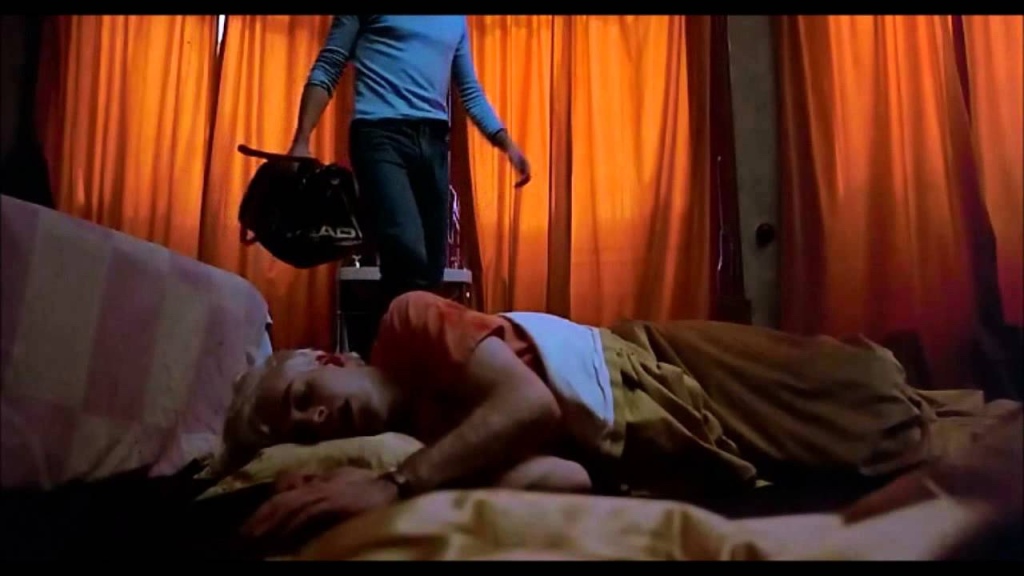Narrative:
The film is narratively satisfying, coming full circle by the end. Renton’s motivations were established at the start of the film, and now his change in motivations/actions has been explained,. Despite the fact that we don’t know what happens to him or the other characters next, the story has been finished, having told the story that it set out to tell.
Key Elements:
At the beginning of this sequence, the camerawork has calmed down, with a higher use of static shots, with a signifying the calm before the storm. Renton, too, seems to have lost his cool confidence, now acting more cautious than he did when he was someone with no care for the consequences of his actions. This change in behaviour and filmmaking signifies a shift in Renton’s world.
Ideology:
The narration, too, is less poetic here, more an explanation of why Renton chose to betray his friends. It is less nihilistic, more pragmatic, even confessional in tone. As his explanation has a moment to sink in, there is a call back to the poetry of the narration at the start of the film. Renton begins an almost reversed versions of that one, with the same rhythm, cadence, but a different delivery, like a mirror image of the first monologue. He now accepts and embraces ‘life’, capitalism, Thatcherism, rejecting nihilism and hedonism. In this way, the film argues that nihilism ultimately fails, leading to nothing, and mist give way to pragmatism.

You must be logged in to post a comment.